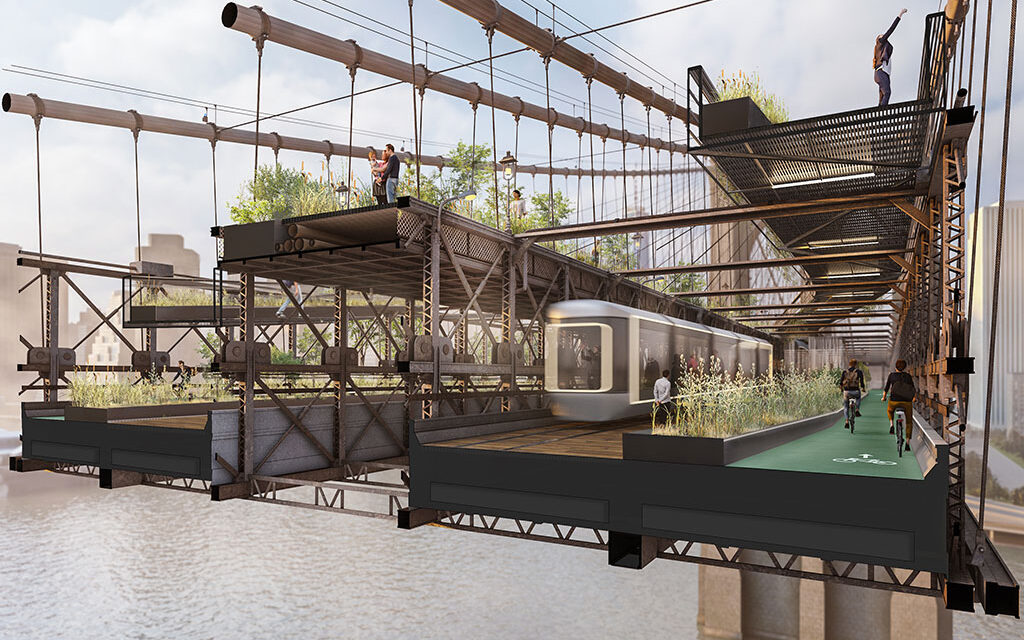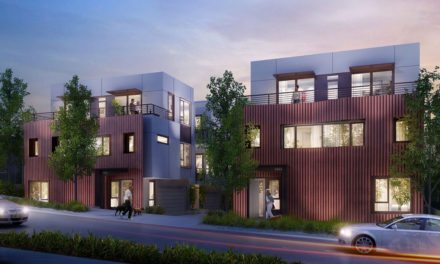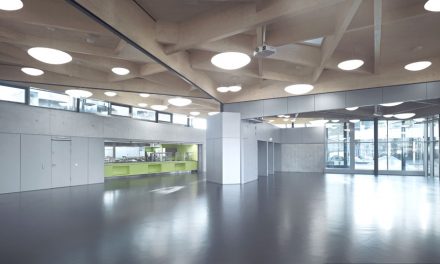DXA studio, an award-winning architecture and design firm based in Manhattan, has reimagined the Brooklyn Bridge to yield an experience that is more accessible, safe, democratic and enjoyable for all. DXA’s version of the Great Bridge envisions a future that elevates people over automobiles, reclaims land entangled by roads and ramps for civic use in the form of parks, museums, local commerce, recreation and housing, and makes the bridge more accessible to adjacent communities.
In the design, the upper deck expansion becomes a planted promenade with lanes for tourists and commuters, while the lower deck features six traffic lanes reduced to two for trolleys and emergency vehicles, with the remainder dedicated to public use, including dedicated bike lanes and planters.
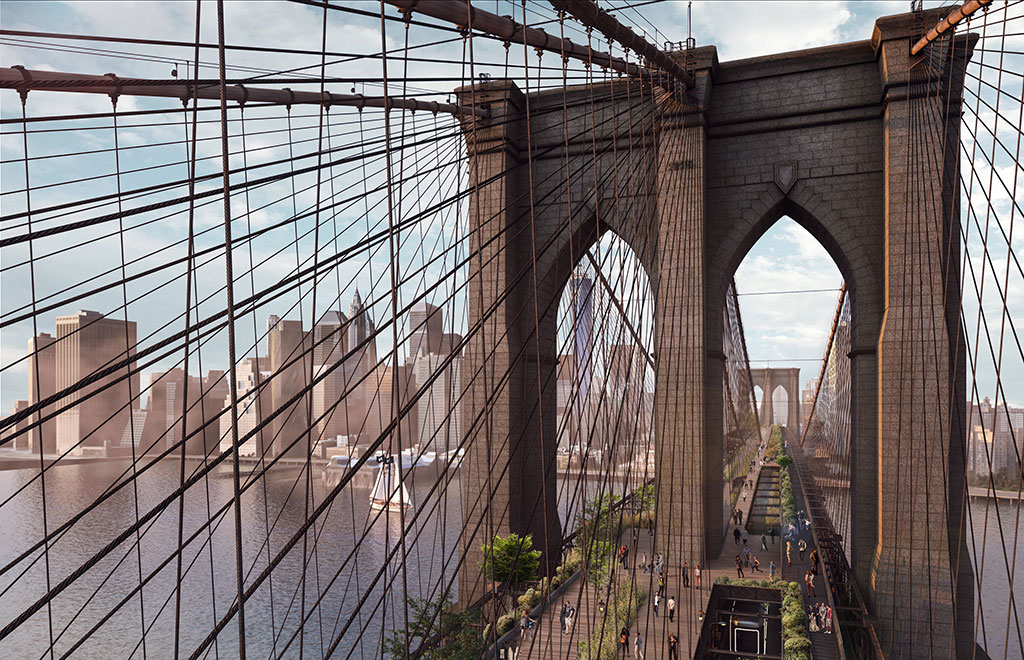
Rendering courtesy of DXA studio
“The Brooklyn Bridge is an exquisite and inspiring structure that was far ahead of its time when it was constructed,” said Wayne Norbeck, Co-Founder and Partner of DXA studio. “With this proposal we believe that this visionary bridge will be returned to the type of public space experience that was originally intended for the millions of people that transverse the span every year.”
On the upper promenade, the plantings will be comprised of colorful matrices of grasses, wildflowers and woody plants drawn from local ecologies like the coastal plain, riparian corridors and upland meadows — rich communities with compelling arrays of flowers, foliage, fruit and form that, when woven creatively, will engage visitors, birds and pollinators alike.
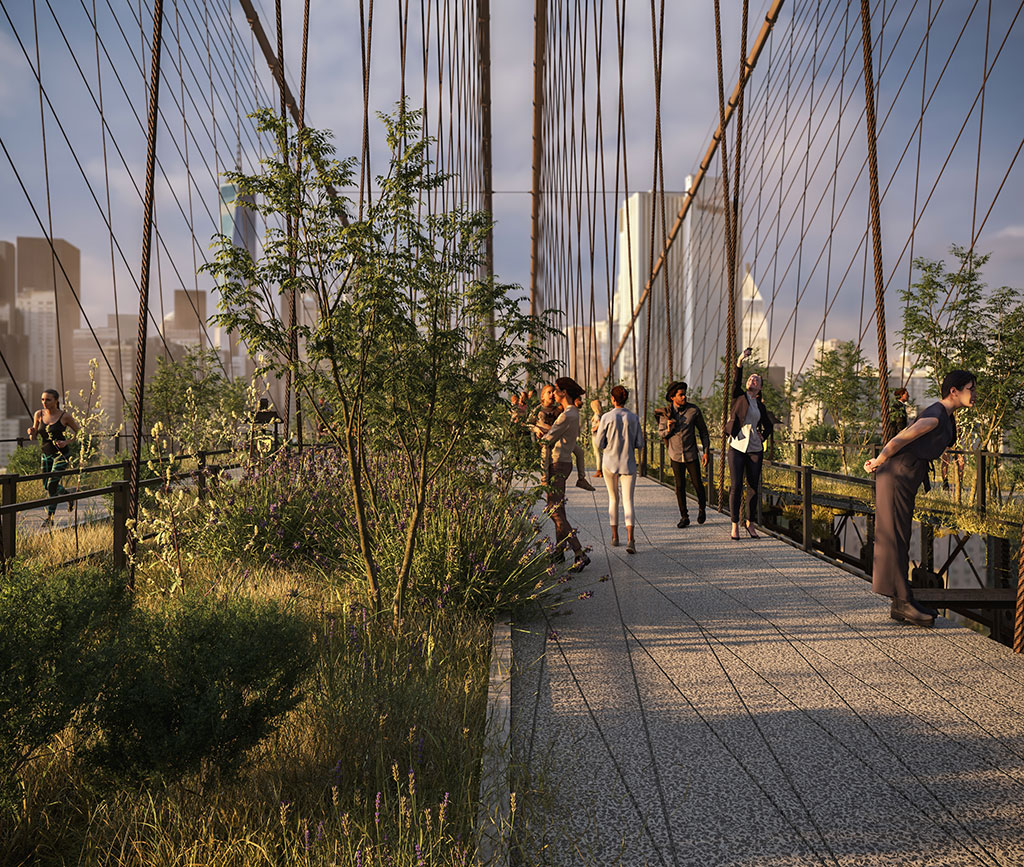
Rendering courtesy of DXA studio
For the lower deck, several of the existing bridge access ramps and traffic lanes would be closed and vehicular traffic redirected in phases over a period of thirty years, consistent with City initiatives such as the Climate Mobilization Act. Trolleys, elevators and shallow ramps, between levels, and lanes wide enough to accommodate wheelchairs and pedestrians will enhance accessibility and mobility. Bicyclists will have dedicated lanes separated from pedestrians, trolleys and emergency vehicles. Finally, different lanes will be provided for tourists and commuters, so that all can simultaneously utilize the bridge for different purposes without negatively affecting one another.
“We have been studying what it means to be a pedestrian in New York City for the past few years, and that research took us back to what the streets used to be like before the automobile took the right of way in the 1960’s, a more vibrant, active and democratic place, a model for the qualities we’d love to see on the bridge,” said Jordan Rogove, Co-Founder and Partner of DXA studio. “All that has happened since we put this proposal together only corroborates this goal, more space to remain safe from the pandemic and meaningful civic spaces and plazas for the voices of the underrepresented to be heard.”
The existing steel on the new outside upper deck walkway will be reinforced and supplemented with additional structural members for increased gravity and lateral capacity. As noted, cross-laminated timber will be used for the external lattice structure as a novel and eco-friendly material, and a nod to the bridge’s pine foundations.
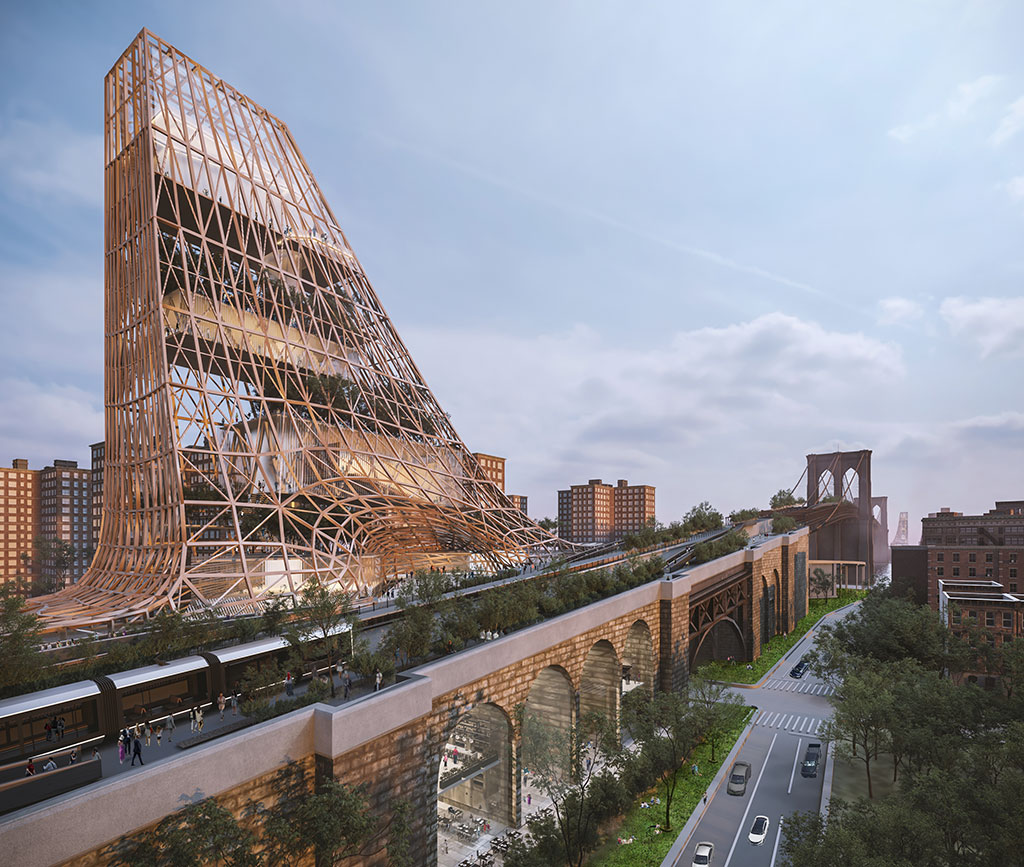
Rendering courtesy of DXA studio
The engineering marvel of the Brooklyn Bridge conceived by John A. Roebling and completed in 1883 was a civic gesture to join streets functioning simultaneously as thoroughfares, markets, promenades and playgrounds, was largely overtaken by the ascendance of the automobile.
This new concept is meant to disentangle the infrastructural knots that currently encumber it and will restore the grandeur of its original design and herald the return of the trolley. The legacy of this balanced restoration and reimagining will utilize materials, technologies and strategies that improve accessibility, civility, equality and enrichment.
The reimagination of the bridge is the result of a collaboration with Philip Habib & Associates, Thornton Tomasetti, and Patrick Cullina Horticultural Design + Consulting. Philip Habib & Associates, who has overseen many of NYC’s most notable development projects such as the Hudson Yards and Riverside South, served as the civil and traffic engineers in order to determine the feasibility of phasing the Bridge’s lane and ramp closures. Thornton Tomasetti, who has previously worked on hazard mitigation and ramp infrastructure for the East River Bridges, served as structural engineers for both the park conversions and the proposed terminal structures, as well as biophilic design consultants. Finally, Patrick Cullina, who has worked on both the High Line and the Brooklyn Botanic Garden, advised on park pathway layouts, planting, and irrigation systems.
About DXA studio
DXA studio is an award-winning design practice that provides a rare balance of expertly crafted design with technical proficiency. Believing in the power of architecture to positively influence the lives of all that engage it, DXA focuses on authenticity, sustainability and innovation in all their projects.
Established in 2011, DXA’s expertise spans the full spectrum of design services and project categories including multi-family and single family residential, commercial, institutional and hotel design. In-depth research and analysis happen prior to design, identifying opportunities to push boundaries and integrate technological advances in building materials, construction, and sustainable strategies. By capitalizing on these discoveries, the site, program and unique opportunities of each project, DXA produces creative solutions and distinctive design work that consistently outperforms expectations.
At DXA studio, client projects begin with an open exchange of ideas and full architect-client collaboration. The client’s program and desires, along with the complexities and context of the site are used to create a conceptual framework. From this process, a design of distinctive identity, clarity, and ingenuity is created.
For more information about DXA studio, please visit http://www.dxastudio.com/.

